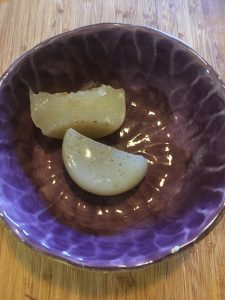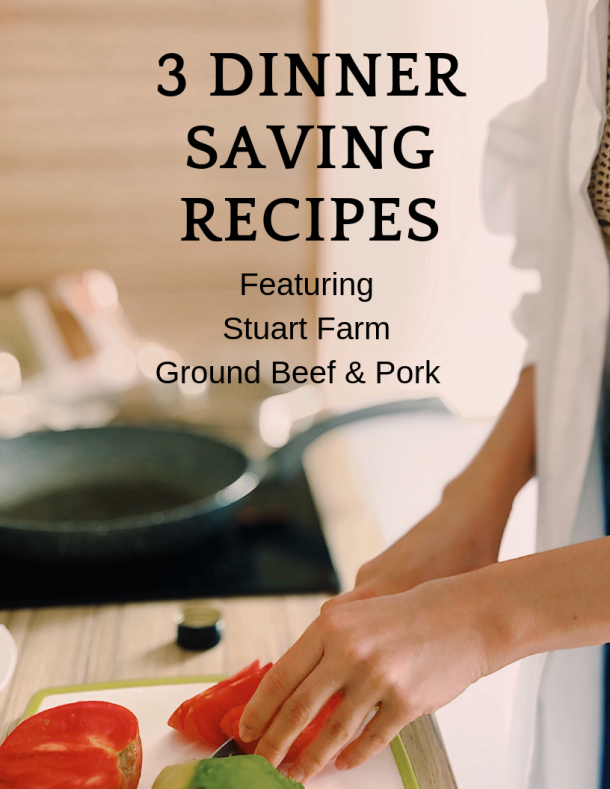
The first time I made bone broth, I ended up throwing it out. After it cooled, it was like gelatin and I thought I ruined it. Oops! Little did I know, the best broth has a solid gel.
Since then, I’ve had different levels of gel in my broth and I’ve finally figured out how to always get the perfect gel.
I’ve helped a few people perfect their broth, so I wanted to share some tips and the one ingredient that will boost the gel factor.
I’m sure you’ve heard that bone broth is a superfood, right? Pound for pound, or cup for cup as it were, bone broth is a nutritious and versatile food you want to keep on hand.
Bone broth is a great source of gelatin protein aka broken down collagen (about 10 grams per 8 oz cup), glucosamine and chondroitin (joint health support), niacin, riboflavin, glycine, and proline. Despite popular belief, you don’t get a lot of minerals from bone broth, but that’s ok. It’s a super nutritious food that can help with gut health, healthy skin, and joint health to name a few.
Plus you can use it for more than just soup. It’s a great sauce base or try cooking rice or quinoa in it.
While you’re sipping on your broth, don’t forget your pets! Bone broth can help them in the same ways it helps you. Since our dogs are large breeds and prone to hip issues, they get bone broth regularly. I feed it cold so it’s gelled and less messy. I have another pet treat tip at the end.
“Regular” Bone Broth
When I cook any bone-in cut, I almost always save the bone (either raw or cooked) in a Ziploc bag in the freezer. Chicken, pork, beef, shrimp shells, doesn’t matter, it all goes in the bag. Once I have a full bag, I make a pot of broth.
BUT, when I want THE best broth, I use–feet!
Why feet? Because all the collagen containing connective tissue breaks down to create a super gel that bones alone don’t quite have. And that’s what you want–a good strong gel.

Chicken Feet
I just made a pot of all chicken feet broth and oh man, was that some serious gel! Even adding 4-6 feet to your regular broth will help increase the gel. I was reading up on it and one source said using all feet has more body than regular chicken broth. I wasn’t really sure what that meant until I tasted it. It was thicker than regular broth, more like a sauce.
For an all feet broth, you can either just put them as is in the pot and cover with water, or you can blanch them and remove the skin. The packs of feet we sell already have the nails removed, so no worry there.
To peel the skin: scald the feet in boiling water for 20-30 seconds. Don’t boil too long or the skin will stick to the muscle. Dump them in a pan of ice-cold water. Peel. They peel best when still warm, so only do as many as you can keep warm while peeling; ~ 4-5 at a time.
Pig Feet
The first time I made pig feet broth I was amazed by the gel. Like chicken feet broth, it’s solid after cooled. I mean S-O-L-I-D. You can run a knife around the jar and ease it out in one piece like canned cranberry sauce at Thanksgiving. PLOP!
Prep for pig feet broth is a bit different than chicken. Of course, you can just put them in a pot and cover with water, or you can roast them first. Roasting is said to make the flavor deeper. I’ve only ever made it after roasting, so not sure what the other way tastes like.
Pig feet broth is very different from chicken or beef broth in one way–taste. I don’t drink straight pork broth as I do with chicken or beef. It just isn’t that tasty to me. BUT, it’s the absolute best in any sauce or soup! It’s like something magical happens when you put something else in it. I save all my pork broth for sauce or soup bases.

Cooking Bone Broth
Add feet and/or bones to a crockpot with 1 Tablespoon of vinegar and cover with cold water. TIP: You want the bones just covered. If the bones/feet are a frozen mass, fill with water halfway, heat on high for 1 hour, and wait until you can break them apart to top it off. Cook on low.
There’s no hard and fast rule about cook time, anywhere between 6-18 hours is good. TIP: try not to cook over 24 hours. If you cook too long, the collagen will break down too much and the broth won’t gel. If any “scum” forms on top, skim it off.
If your crockpot has a warm setting, after 4-6 hours on low, you can switch it to warm overnight. That should keep it at 160F which is out of the food safety danger zone. TIP: cooking at too high of heat also breaks down the collagen and ruins the gel.
Since this is a base broth, I don’t add any veggies or herbs. You can, but I find it easier to strain the broth as is and add in later when I want to use it.
When your broth is ready, strain through a mesh sieve or cheesecloth into jars/containers and set solids aside. Chill in an ice bath until cooled down and place in the fridge for 12 hours.
TIP: leave the fat on top. 1–it’s a healthy fat that’s good for you and 2–it helps seal the broth and keep it fresher in the fridge and safe from freezer burn in the freezer.
It will last a week in the fridge or 6 months in the freezer.

TIP: freeze with at least 2″ headspace for expansion. If you freeze in glass, put the jar in a bowl and defrost overnight in the fridge. Check for cracks before using.
Now you have a big bowl of bones. What do you do with that? Depending on what you used, there’s still plenty of meat leftover. Once everything cools enough to handle, pick out the meat. This is perfect to either add back into the broth or use in tacos.
You can set aside any of the fat, skin, or other “undesirable” soft parts and feed it to your dog or cat as a treat. Just MAKE SURE there are no cook bones in it. If the ends of the bigger bones disintegrate with mild pressure between your fingers into a meal like feel, you can feed that as well. This also opens up the shaft of the bone so you can dig out the marrow if you like.
That’s it! Now you have a health boost in a jar. At the first sign of feeling a bit under the weather or stressed more than usual, warm up a cup or two and enjoy.
Ready to start making your own broth?
Click to buy chicken feet, pig feet, or other cuts.
If you need more help or have questions, click here to email me!
